| Article ID | Journal | Published Year | Pages | File Type |
|---|---|---|---|---|
| 3093193 | Surgical Neurology | 2008 | 5 Pages |
BackgroundA carotid artery aneurysm associated with vascular Behçet disease is extremely rare and often difficult to treat. In this article, we explore a definitive therapeutic strategy for pseudoaneurysm with vascular Behçet disease.Case DescriptionA 56-year-old man presented with swelling and a pulsatile subcutaneous mass of the left neck over a 6-month period. The diagnosis of vascular Behçet disease had already been established from the history of right subclavian artery aneurysm, oral ulcerations, and inflammatory skin lesions. Radiologic examination revealed a giant left CCA aneurysm (6.5 × 5.5 cm) with partial thrombosis. Another asymptomatic aneurysm was found in the right ICA.Because mass effects due to aneurysmal rupture and growth rapidly progressed, we decided on radical treatment. The endovascular reconstruction of the carotid artery was selected instead of direct surgery because of skin and connective tissue disorders at the regional site. A covered stent (8 × 60 mm, Passager, Boston Scientific, Fremont, CA) was placed from the CCA to the ICA, covering the whole aneurysmal portion. Postoperatively, the cervical mass remarkably reduced in size, and the patient's symptoms dramatically improved. The left carotid artery was patent at 12-month follow-up.ConclusionsA covered stent is very useful in repairing arteries with pseudoaneurysm, particularly in cases unsuitable for direct surgery with parent artery occlusion. The influence of the foreign body at the inflammatory lesion and long-term patency of covered stents should be discussed.
